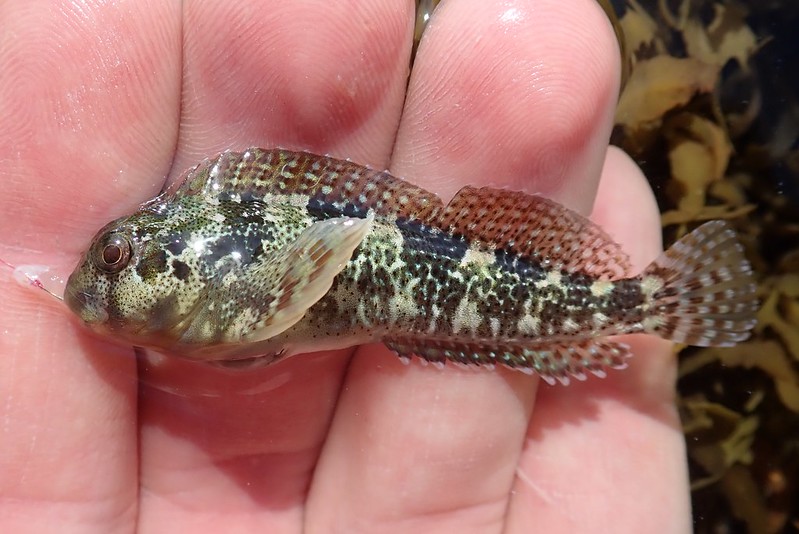Running north along the coast gave us a chance to see Durban from a new perspective. There were a lot of other people out walking and jogging. It was relatively early in the morning, but the humidity took us by surprise. We had to check our egos and run a lot slower than we were used to back home, but it was a refreshing run nontheless.
After our run we enjoyed a big breakfast, stopped by a tackle shop to buy a cooler and rod holders for the surf, and spent an absurd amount of time at the rental car place dealing with some Grade A bullshit. I rented three vehicles through Thrifty while I was in South Africa, and with two out of the three they tried to scam me for significant amounts of money. Do not rent vehicles from them! Finally we were back on the road, headed north towards Lake Jozini where we would be fishing for tigerfish for three days. Before the trip I looked up a tidepool spot in the small town of Tinley Manor, and our timing worked out perfectly with the low tide.
We didn't know what species we would find, but we knew that tidepools always have good diversity. I started off with micro gear and fished the higher pools that weren't getting hit by the crashing surf. There's always one species that's the easiest to catch, and here it was the highbrow rockskipper, a very small member of the blenny family.
Highbrow Rockskipper (Hirculops cornifer) - new hook & line species #607
Josh was having good luck fishing a large lower pool that the waves crashed into. I knew I had more micro targets to go for, but I couldn't resist switching to light spinning gear to try for slightly bigger fish. We used small pieces of the yellowfin tuna that Josh caught the day before, and I added surge wrasse and stone bream to my list. The upper tidepools were convenient spots to take photographs without worrying about losing the fish.
Surge Wrasse (Thalassoma purpureum) - new hook & line species #608
Stone Bream (Neoscorpis lithophilus) - new hook & line species #609
I switched back to microfishing and focused on the mid-level tidepools, the ones that waves occasionally surged into but mostly stayed calm. Josh got a photo of me doing the classic microfishing hunch.

Photo courtesy of Josh Leisen.
I was able to find two more species willing to bite, the maned blenny and Cocos frill-goby. A couple of other species eluded me, in particular a damselfish and a big rockskipper that spent most of its time out of the water on a vertical rock face. I felt pretty absurd trying to present my bait to a fish not in the water! I got him to show interest a few times, but whenever I got my hopes up a big wave would crash over the rock, and I'd have to start all over again.
Maned Blenny (Scartella emarginata) - new hook & line species #610
Cocos Frill-Goby (Bathygobius cocosensis) - new hook & line species #611
We had to pack up and get back on the road after only two hours at Tinley Manor. It was tough leaving new species on the table, but we needed to make it to our tigerfish lodge before they closed for the evening. We made good time driving north, only making one stop for fast food burgers at a rest stop, which were surprisingly good.

Photo courtesy of Josh Leisen.
Fast forward to Wednesday, March 20th. Josh, Eli and I drove back to Durban to stay one more night in Durban before catching a flight to Cape Town. (Ken had to head home early due to a new job start date that couldn't be moved.) We had time to stop at the Tinley Manor tidepools again, so that's what we did. The tide wasn't as low as our previous session, but it didn't deter us.
The highest tidepools only had highbrow rockskippers and Cocos frill-gobies, and the deeper pools had stone bream, surge wrasse, and Blackspot sergeants. I figured the mid-level tidepools would give me the best shot at new species, so that's where I focused. I was able to sight fish two different species of rockskipper, with the second one being the individual that I saw out of the water the first time we were at this spot. I caught him while he was briefly underwater after a big wave washed into his pool.
Kosi Rockskipper (Pereulixia kosiensis) - new hook & line species #623
Fringelip Rockskipper (Entomacrodus epalzeocheilos) - new hook & line species #624
I'm pretty certain the individual above is a male due to his dark colors, and the one below is a gravid female (or maybe just a well fed female, but that's a risky question to ask).
I have to include this shot of the lady fringelip rockskipper. So pretty!
Josh and Eli each caught a few lifers here as well, and by the time the incoming tide pushed us off the tidepools we were ready to pack up and be on the way. I spent a little time casting out to where the rocks transitioned to sand, but I didn't get any bites. Eli is doing the same thing in the photo below.
We made it back to Durban and spent the night in the same hotel as earlier. We felt satisfied with our time fishing the Indian Ocean along the Natal coast, and we were ready to head to Cape Town to fish the Atlantic Ocean!














No comments:
Post a Comment
Note: Only a member of this blog may post a comment.